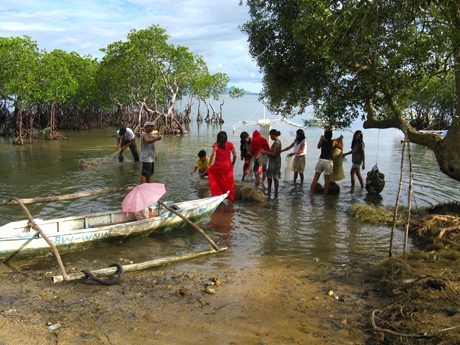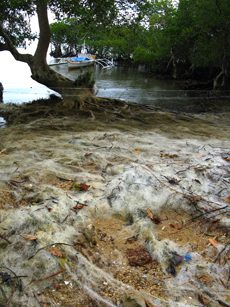
Ramon Arratia, Sustainability Director at carpet tile manufacturer Interface, shares his own company’s experience of reusing waste products, via an innovative third-world project.
To create a circular economy, we must work with the mentality that ‘waste’ does not exist. Instead, when materials and products reach the end of their useful life, they go on to create something new, becoming a future raw material and re-entering the supply chain.
It’s best to eliminate waste at all stages of the product’s lifecycle. This might require thinking about how the raw materials are sourced and extracted, how the product is manufactured, its performance in use and what happens to it at the end of its life. Rather than being discarded as waste, the product should go on to be mined for its raw materials and remanufactured back into the supply chain.
It’s important to remember that waste is everywhere. An over-engineered product, for instance, can produce a significant amount of waste during production, not just after it has served its purpose. Businesses need to consider the whole life cycle of a product and rethink how the entire supply chain is functioning.

Widening the net to reduce waste
By re-using materials and incorporating discarded waste into manufacturing, organisations can reduce their waste to landfill. In addition, if businesses work with the supply chain in a smart and inclusive way, recuperating waste can also have socio-economic benefits, such as creating jobs and income for disadvantaged communities.
To source new raw material from existing waste, Interface created the cross-sector initiative Net-Works in collaboration with the Zoological Society of London (ZSL) and yarn manufacturer Aquafill. The partnership is designed to tackle the growing problem of discarded fishing nets in some of the world’s poorest coastal communities and undertakes the task of re-manufacturing the nets into carpet tiles.
Since its launch Net-Works has established a community-based supply chain, providing socio-economic benefits to local villagers and fishermen in the Philippines while successfully helping to clean up the area’s oceans and providing a continuous source of recycled materials for use in Interface’s carpet tiles.
While Net-Works demonstrates an innovative model for closing the manufacturing loop, it also provides a template for the future of sustainable manufacturing in the carpet tile industry and beyond.
Following the success of the programme in rural coastal areas of the Philippines, Net-Works is now rolling out to the Lake Ossa region of Cameroon.
From sustainable to restorative
Businesses need to identify like-minded partners when developing ways of transforming waste into viable raw material for future products. If business leaders think laterally, commercial applications for many end-of-life ‘changed’ materials will open the door to new revenue stream opportunities. An interesting example is Rotterzwam, a Dutch company that uses ground coffee bean waste as fertiliser to grow mushrooms.
By focusing on the reduction and re-use of waste, organisations can go beyond mere “sustainability”, and aim to operate in a way that is as restorative as possible.






